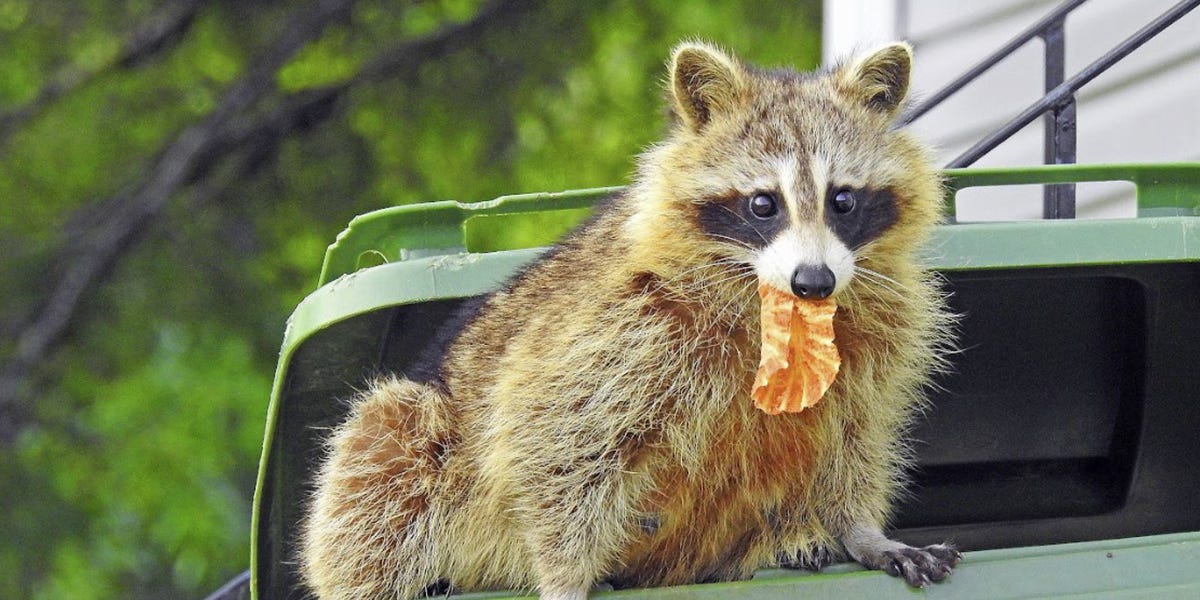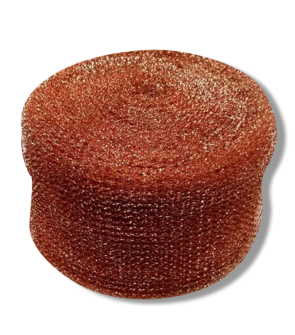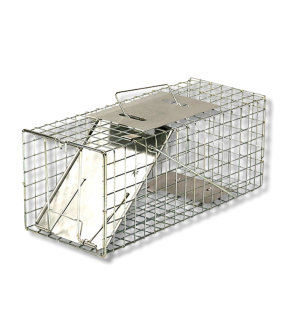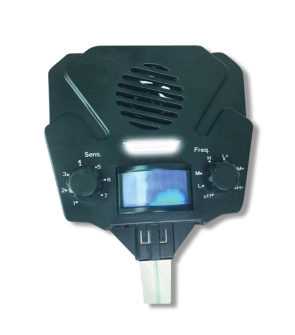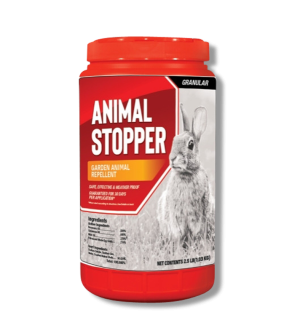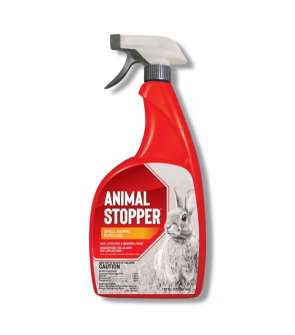Raccoon Control
Most Effective Products
Raccoon Control: How to Get Rid of Raccoons
While the common pests that homeowners usually deal with during the times of the year where it’s starting to get cooler are rats and mice, another common nuisance that should not be overlooked during fall or winter time is wildlife like the Raccoon.
More commonly found in woodsy regions in the Eastern United States, a Raccoon problem can creep up anywhere in the country and if you happen to have one decide to hang around your neighborhood, you may be in for a lot of destruction.
There is a reason Raccoons are considered wildlife, because they can get pretty wild around the home and can give homeowners fits by knocking over trash cans, eating bird feed and scratching and clawing all over the place in search of food. They have been known to damage gardens and tear off shingles and boards in their attempt to get into crawl spaces in homes, finding their way into attics, basements, and garages.
If you want to know how to get Raccoons off of your property, follow our DIY guide for product recommendations and instructions that will get rid of the Raccoon problem quickly.
Identification

Before considering a treatment approach, you need to make sure that the wild animal lurking on your property is a Raccoon. This will ensure that you are using the correct bait and strategies.
- Raccoons are generally 12 inches tall and 24 to 38 inches long.
- Raccoons are distinctive; they have gray fur, a ring-striped tail and black markings on their faces which resemble a mask.
- They normally weigh between 15 and 25 pounds and are intelligent animals.
- They have large droppings similar to dogs.
- Raccoons are nocturnal and at times can be particularly aggressive wild animals. Take caution when approaching or handling this animal.
- Raccoons are excellent climbers and are able to swim.
Use the image and description above to confirm that you are dealing with a raccoon on your property. If you are not totally sure, contact us and one of our pros will assist you with proper identification.
Inspection
Once you have confirmed that your pest animal is a raccoon, it is helpful to perform an inspection to note the areas where it is most active. This will help you determine where to focus your treatment efforts.
Where to Inspect
Raccoons are most likely in your attic looking for food, shelter, or both. If you have any clutter or storage bins in your attic, they are most likely burrowing in these particular spots.
Raccoons may also be in basements or garages where trash is stored, as well as areas with clutter or pet food will most likely be spots where raccoons are most active. Search the corners and crevices as well.
You will want to inspect any studs and beams for signs of activity. If you have any wiring in your attic, take a close look at those to make sure they are not damaged.
Outdoors they may be around gardens, dumpsters or trash bins rummaging for food.
What to Look For
You should be looking for Raccoon damage, Raccoons themselves or any signs of infestation. Because raccoons are nocturnal animals, any damage will be done at night. There are certain signs that signal raccoon activity, such as trash cans that are pushed over, damaged gardens, and raccoon tracks. These tracks will look like tiny hands that are about 2 to 3 inches wide. One of the most obvious signs of a raccoon infestation is their droppings, as well as chew marks.
Be sure to scan boxes and electric wires for gnaw marks or damage. You will also want to search for damaged shingles, as well as damaged electrical wiring and piping.
Treatment
Now that you have identified your pest animal as a raccoon and taken note of areas where it is most active, you can proceed with a treatment. The best option for Raccoon control is trapping. Use the Solutions Humane Live Trap in strategic areas to try and lure the Raccoon to the trap.
Be sure to wear gloves when handling the trap to prevent leaving your scent. If a raccoon picks up a human scent on the trap, it will avoid the trap, which will make it ineffective.
Step 1 - Remove Food Sources

You want the raccoon to enter the live trap with the help of bait. Because of this, competing food sources need to be removed.
Clean the suspected areas like your garage, basement or attic thoroughly, being sure to remove any clutter or debris. Keep your trash sealed in trash bags and stored in trash bins. Other food sources such as pet food should be stored inside.
Step 2 - Place the Trap

By now, you should have taken note of areas with high raccoon activity. These areas are where you will put your trap. Be sure to place your trap on an even surface. A raccoon might push or knock over the trap in order to reach the bait inside. Place a brick or weight on top of the trap to avoid this.
Outdoors, place the trap along the edge of your property. Physical boundaries like fence lines, dense foliage or garden edges make for great places to set the trap. Indoors, you can place the trap in the attic, basement, garage or anywhere you have noted Raccoons being active, preferably near entry points or along the walls.
Step 3 - Bait and Set the Trap

Once you are satisfied with where you have placed the trap, you can then bait it. When baiting your trap, it's important to place the bait at the far end of the trap behind the trigger plate so that when the Raccoon goes to feed on the bait, it is more likely to trigger the trap.
You will then set your trap by pushing on the door lock and lifting the door plate. Keep the door plate lifted while pulling the trigger arm forward to set it. You will know it is set when the trigger arm's hook catches the door.
Step 4 - Monitor the Trap and Relocate the Raccoon when Caught

It may take some time for the Raccoon to be caught so monitor the trap twice a day until the Raccoon has been caught. When checking, you may need to refill with more bait if they were able to get in and consume the bait without triggering the trap.
Once you have captured the Raccoon in your live trap, check your local authorities to make sure you are correctly relocating the animal. Place a towel over the cage to avoid frightening the raccoon. Travel to your release location which should be about 20 miles from where you have caught the Raccoon. You can read more about releasing an animal from a live trap here.
Prevention

Once the Raccoon has been caught you want to make sure they dont make a return. Here are some preventative measures we suggest which will reduce the chances of a Raccoon reinvasion.
- Keeping trash out in the open is an invitation for a raccoon. Be sure to place all waste in a trash can, preferably with a lid so it can be kept closed.
- Remove all clutter and debris from your property, since raccoons may be drawn to nest and burrow in these areas. Any potential food or water sources, especially pet food, should be properly sealed in a container and stored indoors.
- If your property is near a wooded area and you have no fencing, you may be susceptible to having raccoons and other wild animals invade your property. Consider blocking off your property with some fencing.
- Raccoons are most likely entering your attic through open entry holes. To avoid raccoons from entering your attic or home, be sure to check the roof for any holes. These entry points should be identified and closed immediately to prevent more pest animals from entering.
- Exclude Raccoons from your home by using caulk and Stuf-Fit Copper mesh to seal entry points that they could possibly use.
Key Takeaways
What are Raccoons?
- Raccoons are nocturnal animals that have gray fur, striped tails, and black markings on their faces that resemble a mask. They are most likely invading your attic looking for food, shelter, or both.
- While the Raccoon's natural habitat is in the wooded wilderness, they can venture out into neighborhoods in search of denning sites and may even go so far as to find their way into your home by going through your chimney or making their way to your attic, garage or basement or living up in a tree in your yard.
How To Get Rid of Raccoons From Your Property
- The best way to get rid of Raccoons is to use a live trap like the Solutions Humane Live Trap. Bait the trap with some enticing food and set the trap strategically in an area where you have observed Raccoon activity.
- Check the trap once in the morning and once in the evening. Once a raccoon is caught, check with your local authorities to make sure you safely and correctly release it.
Preventing Raccoon Reinfestation
- Prevent raccoons from entering your attic again by removing any potential food sources and trash, as well as sealing any cracks and crevices with Stuf-Fit Copper Mesh and caulk.
